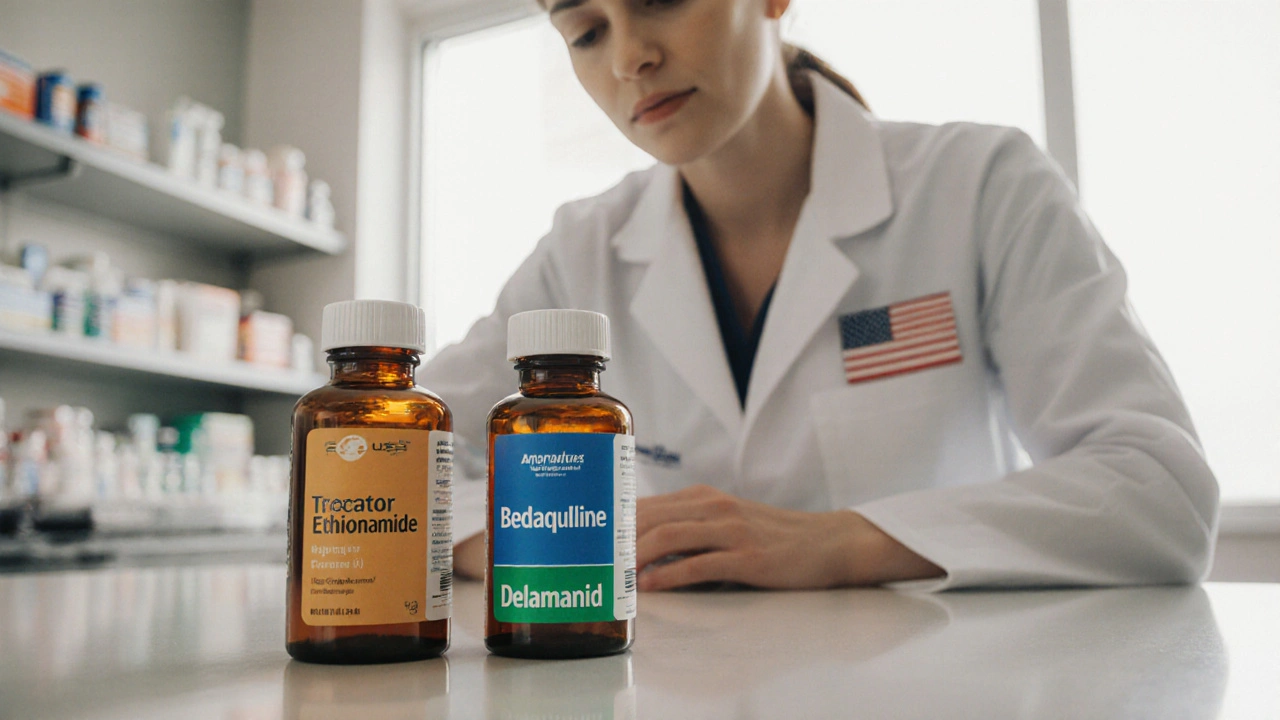When dealing with Ethionamide, an oral second‑line anti‑tuberculosis medication. Also known as Ethion, it blocks mycolic acid synthesis in Mycobacterium tuberculosis, the bacterium that causes TB. Because of this mechanism, Ethionamide is a core component of multidrug‑resistant TB (MDR‑TB) regimens, often paired with drugs such as Isoniazid or fluoroquinolones. The drug’s activation requires the enzyme EthA, and mutations in the ethA gene can reduce its efficacy, creating a direct link between bacterial resistance and treatment outcomes. In short, Ethionamide sits at the crossroads of drug design, bacterial genetics, and patient management, making it a vital piece of the TB puzzle.
For clinicians, the decision to add Ethionamide hinges on three main factors: the resistance profile of the infecting strain, the patient’s liver function, and the overall safety of the regimen. Ethionamide’s efficacy shines when standard first‑line drugs—like rifampicin or isoniazid—fail, which is especially common in regions with high MDR‑TB prevalence. Dosage typically starts at 15‑20 mg/kg per day, split into two doses, and can be adjusted based on therapeutic drug monitoring. Side effects often include gastrointestinal upset, peripheral neuropathy, and hepatotoxicity, so regular liver enzyme checks are a must. Moreover, because Ethionamide can interact with other anti‑TB agents (for example, it may increase the risk of thyroid dysfunction when combined with para‑aminosalicylic acid), clinicians need to balance benefits against potential adverse events. Real‑world studies from South Africa and India show that patients who receive a well‑monitored Ethionamide‑based regimen achieve sputum conversion rates comparable to newer oral agents, highlighting its continued relevance.
If you’re looking for a clear picture of Ethionamide, keep reading. Below you’ll find a curated set of articles that break down every angle of this drug: from the science behind its action on Mycobacterium tuberculosis to practical tips on managing its side effects, navigating drug‑resistance challenges, and comparing it with other second‑line options. Whether you’re a patient trying to understand why your doctor prescribed this pill, a pharmacist checking for interactions, or a healthcare professional updating your TB protocol, the posts ahead will give you concrete, up‑to‑date information you can act on right away.

A deep dive into Trecator SC (Ethionamide), its role in MDR‑TB therapy, and how it stacks up against newer alternatives like Bedaquiline and Delamanid.
View more